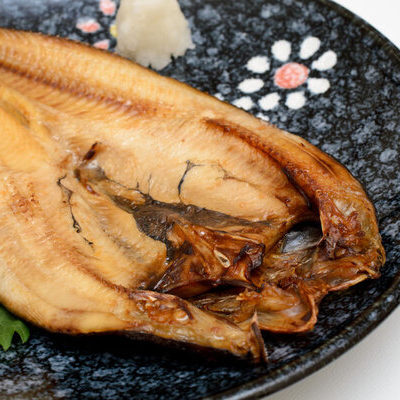
Dried Mackerel
What is Dried Mackerel?
Dried mackerel is mackerel that has been dried and preserved using different processes. Mackerels are fish that have forked tails and vertical stripes, although they spoil very quickly once caught and must be consumed within twenty four hours. Hence, this species has been subject to preservation techniques since ancient times.
- It is an extremely common food throughout South and Southeast Asia.
- Mackerel may be salted and sundried for best results; however, dried mackerel is also available in canned form.
According to Business Insider, the top 10 best canned seafood brands are:
- Wild Planet
- Safe Catch
- Crown Prince
- Patagonia Provisions
- Jose Gourmet
- Conservas de Cambados
- Olasagasti
- Matiz
- Ortiz
- Bela
Origin of dried mackerel
This dried fish has been produced by different communities since ancient times, especially in Asia. Drying and salting fish was regularly done in the absence of refrigeration. This is still the way many fishing communities and cottage industries preserve mackerel to this day. Eventually, the Portuguese took this technique back to Europe from where it spread. This fish remains a popular food throughout the world due to its rich oils and fats.
Nutrition
One fillet (88g) can have the nutritional value of:

Oily fish, such as mackerel, is an important source of n-3 long-chain polyunsaturated fatty acids, which help reduce blood pressure and plasma triacylglycerol, thus affecting cognitive development. However, it has less antioxidants than fresh mackerel. Dried fish contains approximately 50 percent more protein than fresh fish. Also, mackerel is rich in minerals such as iron, potassium, copper, magnesium, phosphorous, selenium, sodium, and zinc, as well as in B vitamins such as niacin, pantothenic acid, riboflavin, thiamin, cobalamin, and pyridoxine in addition to vitamin A.
On the downside, there may be high levels of sodium in dried mackerel, depending on the drying process. Too much salt can lead to health problems such as high blood pressure and heart diseases. It is best to consume salty foods in moderation, especially if you have a heart condition.
Commercial production
The largest exporters of dried fish are Norway, China, Vietnam, Thailand, and Hong Kong. The top importers are Hong Kong, Sri Lanka, China, South Korea, and Dominican Republic.
The fish is dried so as to reduce its moisture content by about 80 to 85 percent, in order to prevent mold from growing and the fish deteriorating. Drying also stops enzymatic activity and changes the chemical balance of the mackerel.
Drying may be done naturally or artificially. Natural drying of mackerel is done by sun drying or air drying the fish. Artificial drying is done with dryers under controlled conditions. Dried mackerel may also be produced by vacuum drying or freeze drying techniques. The final aim of drying is to ensure that the fish remains fresh for longer by removing the moisture on which microorganisms thrive.
Dried mackerel is best stored wrapped in paper and placed in a cool and dark place without exposure to moisture or sunlight. Under optimum conditions, the fish will remain fresh for up to 2 months. At lower temperatures, it may even last longer. Refrigerated products will keep for up to 3 months. Frozen, it may even last for up to one year.
Dried mackerel recipes
Dried mackerel has a strong flavor and odor, which does not appeal to everyone. Although when used in the right dishes, such as with pasta or rice, dried mackerel can make a great alternative to fresh fish. Here are some recipes:
- Dry Mackerel Salad
- Sukya Bangdyache Hooman
- Dry Mackerel Kismoor
- Dried Mackerel & Tomato Pasta
- Smoked Dried Mackerel Fish Gravy and White Rice
- Salted Fish Fried Rice
- Dried Mackerel Chutney
FDA regulations
Dried fish is regulated by the FDA, which defines fish as any fresh or saltwater finfish, crustaceans, and other forms of aquatic life. Dried fish products are also completely regulated by the FDA. The agency outlines the additives, moisture content, fat content, and labeling that are permitted for this food.
References
Fiona McGlynn, Five ways to preserve fish without refrigeration, Ocean Navigator Magazine, https://www.oceannavigator.com/five-ways-to-preserve-fish-without-refrigeration/
“Dried Fish.” Dried Fish – an Overview | ScienceDirect Topics, www.sciencedirect.com/topics/food-science/dried-fish.
Dr. Remya. S., Renuka. V., Sreelakshmi. K. R & Dr. Toms C. Joseph, Hygienic drying and packing of fish, Central Institute of Fisheries Technology, Indian Council of Agricultural Research, https://krishi.icar.gov.in/jspui/bitstream/123456789/20770/1/Training%20Manual_Hygienic%20drying%20and%20packing%20of%20fish.pdf
Pelmeshkin house – Culinary portal, How to keep dried fish for a long time. How to store dried fish at home: in the refrigerator and freezer? There are several types of fish smoking, Spasskiyrest, https://spasskiyrest.ru/en/recepty-vypechki/kak-nadolgo-sohranit-vyalenuyu-rybu-kak-hranit-vyalenuyu-rybu-v-domashnih.html
Damsgaard, Camilla T et al. “Effects of oily fish intake on cardiovascular risk markers, cognitive function, and behavior in school-aged children: study protocol for a randomized controlled trial.” Trials vol. 17,1 510. 21 Oct. 2016, doi:10.1186/s13063-016-1647-z, https://www.ncbi.nlm.nih.gov/pmc/articles/PMC5073969/
